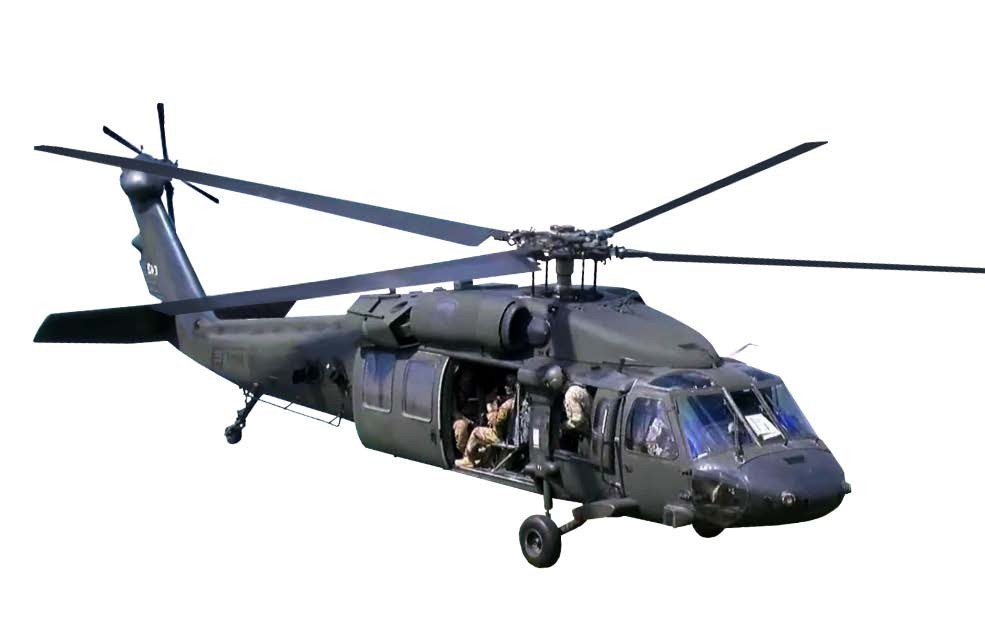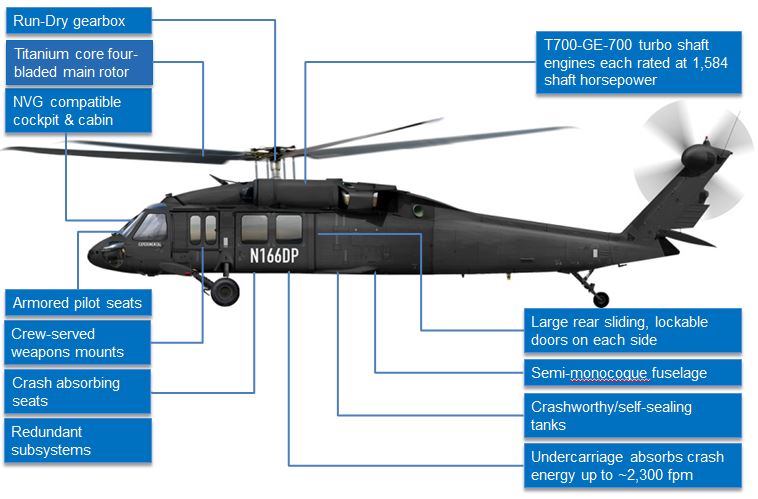The UH 60: A Consider Its Duty in Modern-Day Military Missions
The UH 60: A Consider Its Duty in Modern-Day Military Missions
Blog Article
UH-60: Innovations in Modern Helicopter Style
The UH-60 helicopter stands as a standard in contemporary aviation, showcasing significant developments in style and innovation that cater to the advancing demands of armed forces operations. As we explore the development and vital technologies of the UH-60, it comes to be vital to consider just how these developments influence not only current applications but additionally the future landscape of helicopter design.

Advancement of the UH-60
The evolution of the UH-60 Black Hawk helicopter stands for a substantial turning point in aerospace engineering and armed forces aviation. Presented in the late 1970s, the UH-60 was developed by Sikorsky Airplane to satisfy the USA Army's need for a flexible utility helicopter qualified of doing a variety of objectives. Its layout highlighted ability to move, resilience, and speed, setting new standards for functional efficiency.
The UH-60 features a distinct four-blade rotor system, which boosts lift and security, enabling it to operate effectively in diverse atmospheres. Its airframe is created from sophisticated composite materials, adding to a reduction in weight while keeping architectural stability. The helicopter's style additionally includes enhanced the rules of aerodynamics, which enhances fuel performance and boosts array.
Over the years, the Black Hawk has undergone several upgrades to enhance its abilities, including boosted engines, progressed trip control systems, and modular systems for simple upkeep and adaptability. The helicopter's capacity to perform missions ranging from army transportation to clinical emptying has actually strengthened its role as a foundation of united state army operations. The UH-60 Black Hawk continues to be an archetype of exactly how advancement in helicopter style can substantially influence army efficiency and operational versatility.
Advanced Avionics Solutions
Improvements in avionics systems have transformed the capabilities of modern helicopters like the UH-60 Black Hawk, boosting functional efficiency and situational understanding (UH 60). The integration of advanced avionics permits for enhanced flight, navigation, and communication monitoring, making the UH-60 a lot more functional in diverse objective accounts
Among the key functions is the advanced digital cockpit, which uses multifunction displays that offer real-time information, guaranteeing pilots have prompt access to crucial trip info. This streamlining of details lessens pilot workload and improves decision-making processes throughout complex procedures. Furthermore, the unification of GPS and inertial navigation systems allows specific positioning and course preparation, improving objective implementation in challenging atmospheres.
Additionally, advanced avionics systems enhance communication capabilities with safe information web links and voice interaction systems, allowing seamless sychronisation with ground pressures and other airplane. The assimilation of automatic trip control systems even more adds to improved stability and control, especially in unfavorable weather or throughout low-altitude maneuvers.
Engine and Efficiency Enhancements
Engine performance in modern-day helicopters has taken a significant jump ahead, driven by advancements that increase power, dependability, and effectiveness. At the forefront of these advancements is the adoption of more powerful turboshaft engines, specifically those using innovative materials and modern technologies that allow greater temperature level tolerances and boosted thrust capabilities. The UH-60 Black Hawk, for instance, makes use of the T700-GE-701C engine, which includes a dual-channel, full-authority digital engine control system. This system boosts efficiency while optimizing fuel consumption and lowering maintenance requirements.
Furthermore, the combination of engine health and wellness tracking systems enables real-time diagnostics and anticipating maintenance, considerably improving operational integrity. These systems not only sharp staffs to potential issues before they become critical yet also help with extra reliable maintenance scheduling, therefore decreasing downtime.

Materials and Structural Innovations
Recent developments in products and structural layout have revolutionized modern-day helicopter building and construction, boosting both performance and sturdiness. The intro of innovative composite materials, such as carbon fiber enhanced polymers, has actually substantially lowered weight while preserving architectural stability. This shift not only boosts gas efficiency yet additionally enhances haul capability, enabling helicopters like the UH-60 to do more diverse goals.
In addition, innovations in light weight aluminum alloys and titanium components have actually added to enhanced resistance to rust and tiredness, prolonging the life expectancy of essential airframe components. The critical use these products has actually caused a reduction in upkeep demands and boosted total operational readiness.

Additionally, the integration of computer-aided layout (CAD) and additive manufacturing modern technologies has made it possible for a lot more lightweight frameworks and complicated geometries, maximizing the wind resistant performance of helicopter layouts. These developments facilitate fast prototyping and production, permitting producers to react promptly to progressing mission needs.
Security and Survivability Functions
Safety and security and survivability functions in modern helicopter layout have become vital, reflecting the raising demands for mission performance in tough atmospheres. The UH-60 Black Hawk, a noteworthy instance, integrates innovative technologies to boost team and traveler defense. Among one of the most crucial innovations is the unification of crashworthy fuel systems made to reduce the risk of fire during effect. Additionally, the airframe get redirected here is constructed with enhanced materials that take in and dissipate energy, further shielding occupants in the occasion of a collision.
The helicopter also utilizes a ballistic protection system, that includes armored crew seats and essential systems securing, minimizing vulnerability to little arms fire and shrapnel. Improved situational awareness is accomplished via sophisticated avionics and sensor technologies, permitting pilots to discover and avoid risks successfully.
Furthermore, the combination of redundancy in essential systems-- such as twin engines and numerous trip control channels-- makes sure ongoing operation even if one system stops working. The UH-60 is geared up with advanced emergency flotation protection gadgets, boosting survivability in water touchdowns. Jointly, these functions not only boost the safety of workers yet also boost goal success prices in hostile environments, showing the dedication to excellence in helicopter design.
Conclusion
The UH-60 helicopter represents a substantial development in modern-day aviation technology, including cutting-edge materials, cutting-edge avionics, and durable safety and security features. In general, the UH-60 offers as a criteria for future developments in helicopter layout, symbolizing durability and versatility in contemporary this contact form armed forces procedures.
The UH-60 helicopter stands as a benchmark in modern aeronautics, showcasing considerable developments in design and technology that provide to the advancing needs of military procedures. As we check out the advancement and essential developments of the UH-60, it comes to be crucial to think about how these growths affect not only present applications yet also the future landscape of helicopter design.
Presented in the late 1970s, the UH-60 was developed by Sikorsky Airplane to meet the United States Army's demand for a flexible utility helicopter capable of executing a variety of goals. The UH-60 Black Hawk remains a prime example of exactly how innovation in helicopter design can significantly impact armed forces efficiency and functional adaptability.
In general, the UH-60 serves as a criteria for future growths in helicopter style, symbolizing strength and versatility in contemporary military procedures.
Report this page